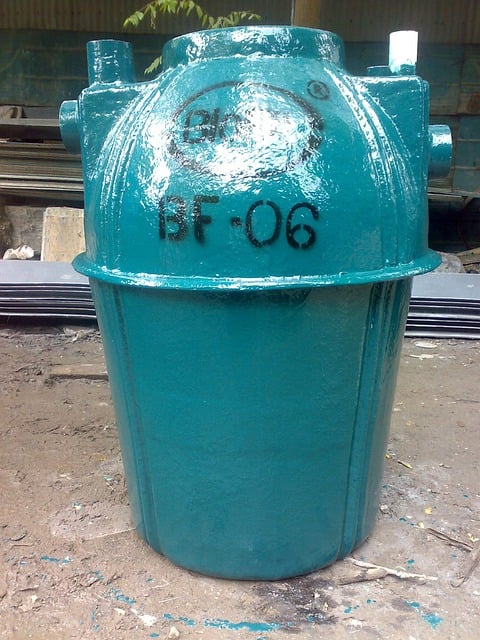Septic System Maintenance requires understanding your unique system needs, as these tanks rely on bacterial ecosystems for waste breakdown. Key factors influencing pumping intervals include tank size, user number, and waste habits. Ideal pumping frequency varies by age, size, water use, and occupant count, ranging from every 3-5 years to 7-10 years for well-maintained larger tanks. High-usage households should pump more frequently. Regular inspections, annual maintenance, and responsible waste management prevent costly repairs, prolong system life, and minimize environmental impact.
Discover the optimal pumping schedule for your septic tank! This guide explores the science behind regular maintenance, revealing surprising insights on how often it should be pumped. Understanding your septic system’s unique needs is key. We’ll break down critical factors influencing pumping frequency and provide best practices to ensure a healthy, efficient septic system—essential knowledge for responsible homeowners. Learn how to maintain this vital component of your property for long-term sustainability.
- Understanding Your Septic System's Needs
- Factors Influencing Pumping Frequency
- Best Practices for Septic Tank Maintenance
Understanding Your Septic System's Needs

Understanding your septic system’s needs is crucial for effective maintenance and longevity. Unlike traditional trash cans, septic tanks require a different kind of care regimen due to the delicate balance of bacteria that break down waste. This natural process is essential for preventing clogs and ensuring efficient operation. Therefore, regular pumping intervals should be determined by factors like tank size, number of users, and waste disposal habits.
Septic system maintenance involves more than just periodic pumping; it’s about recognizing patterns in usage and corresponding adjustments. For instance, larger families or businesses with higher water consumption may require more frequent pumping to manage the increased strain on the septic system. Regular monitoring and understanding these needs will help avoid costly repairs and ensure your septic tank operates smoothly for years to come.
Factors Influencing Pumping Frequency

The frequency at which you should pump your septic tank is influenced by several factors, indicating that there’s no one-size-fits-all answer to this question. One of the primary considerations is the size and age of your septic system. Older systems or those with smaller storage capacities may require more frequent pumping, usually every 3 to 5 years, to prevent buildup and maintain optimal performance. Conversely, larger, well-maintained septic tanks could go as long as 7 to 10 years between pumpings.
Another crucial factor is the number of people using the system and their daily water consumption habits. High-usage households with large families or frequent visitors produce more waste, leading to faster accumulation in the tank. Additionally, certain activities like high water usage during specific times of day or using water-intensive appliances can impact pumping frequency. Regular monitoring and maintenance are essential components of septic system care, ensuring that any issues are addressed promptly to prevent costly repairs and environmental hazards.
Best Practices for Septic Tank Maintenance

Regular maintenance is key to keeping your septic system running smoothly. While the frequency of pumping depends on several factors, including the size of your tank and the number of people using it, a good rule of thumb is to have your tank inspected annually and pumped every 3-5 years. This routine ensures that any potential issues are identified early on, preventing more serious—and costly—problems down the line.
Proper septic system maintenance involves more than just pumping. It’s important to also prevent excess waste from entering the tank. This includes not pouring grease, coffee grounds, or non-biodegradable materials into the system and ensuring proper drainage from your home or business. Regular maintenance not only extends the life of your septic system but also minimizes the risk of contamination, keeping your environment cleaner and healthier for all.
Regular septic tank pumping is essential for maintaining a healthy septic system. While the optimal frequency depends on various factors, aiming for every 3-5 years is generally recommended. By adhering to best practices and understanding your specific needs, you can ensure optimal performance and extend the lifespan of your septic system, promoting efficient wastewater treatment and minimizing environmental impact. Regular maintenance is key to avoiding costly repairs and preserving this crucial component of our water management infrastructure.
